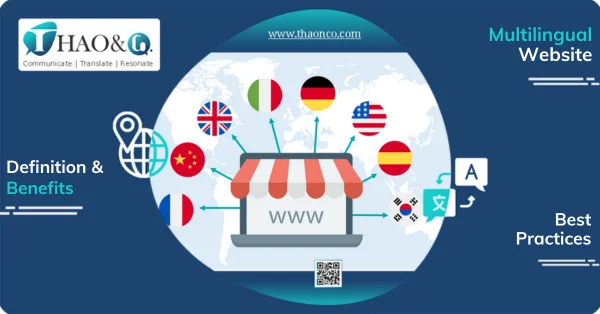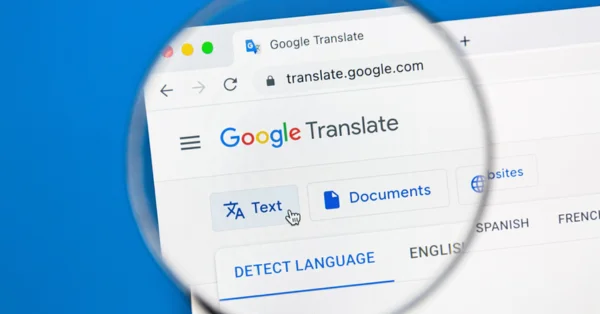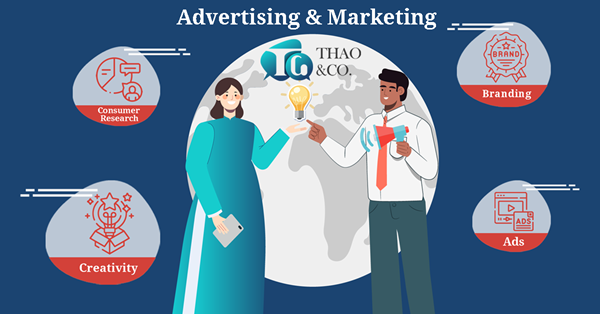Multilingual websites are becoming increasingly popular, becoming a vital tool to help businesses expand their reach. In the globalized era, it is crucial to expand markets and reach international customers. This article from Thao & Co. provides essential insights on strategy and guides you through the practical steps of building a successful multilingual website.
A website, also referred to as a web page, is an aggregation of multiple pages containing content in various formats such as images, audio, articles, etc., and can be accessed through an online web browser. A website is typically identified by an address, also known as a domain, and is hosted on a server. Examples of websites include Google.com, Youtube.com, and Facebook.com.
A multilingual website is a type of website where the content on the pages can be displayed in multiple languages. As a result, the website has the ability to reach various regions and markets around the world. It is an effective solution for businesses looking to expand their market and integrate with the global economy.
Multilingual websites are definitely a game-changer for many businesses. Due to competitiveness and the high cost of accessing new markets, website translation services become the optimal solution.

Here are the benefits that businesses can enjoy when owning a multilingual website:
Multilingual websites create opportunities for businesses to expand their customer base. Language barriers can be removed, facilitating convenient communication for customers. Using the right language builds trust with customers and enhances brand perception. Using the right language can also positively impact international marketing efforts.
Although many browsers support text translation, the results are often not particularly impressive. While automatic translation tools like Google Translate offer a quick solution, their lack of nuance and accuracy can cause confusion for readers. Therefore, automatic translations make it difficult to convey the subtleties of your message and resonate with international audiences.
Multilingual websites seamlessly integrate layouts, content, and design elements in a culturally appropriate manner, creating a cohesive user experience. Customers can effortlessly connect with your brand, build trust, and make informed decisions about your products or services. For products with complex features or specialized functions, precise multilingual terminology fosters credibility and trust with international customers.
A key benefit of websites is their ability to attract customers across the internet, opening doors to new markets and a wider audience. To truly tap into the vast potential of online reach, businesses need to master the art of search engine optimization (SEO). Websites must meet SEO criteria, and optimizing keywords for different languages is key to reaching global audiences.
Having translated content readily available streamlines SEO efforts by eliminating the need to create original content for each language, allowing you to focus on optimizing existing content for various search engines. The efficiency gained through translated content allows SEO experts to focus on fine-tuning keyword strategies, adjusting internal linking structures, and optimizing multimedia content. Modern search engines leverage advanced algorithms to understand the context and intent behind content, allowing them to connect users with relevant searches more effectively.
The importance of a multilingual website is undeniable. Some common methods for website translation include:
To create a multilingual website, the most common solution is to add the Google Translate button directly to the webpage. Google’s API simplifies this process, empowering webmasters to offer a range of language options with minimal effort.
For casual website visitors who need a quick and basic understanding of content in a different language, Google Translate offers a familiar interface, ease of use, and instant results. The ease of use comes at a cost: Google Translate’s inaccuracies can hinder SEO efforts by providing content that search engines struggle to understand or index.

If your website is built with WordPress, you can leverage the power of plugins. WordPress translation plugins include two types: automatic translation plugins and manual translation plugins.
Automatic translation plugins add several types of translation management and display codes to your website. You will typically need to provide a Google Translate API key to enable the translation. The advantage of automatic plugins is that they save webmasters the trouble of editing source codes. However, as these plugins leverage automatic translation tools such as Google Translate, the translations may not be natural.
Meanwhile, manual translation plugins allow webmasters to add translations themselves. Manual translation improves the website’s overall quality, optimizes the user experience, and enhances SEO effectiveness. However, the actual quality of the translation remains the most crucial factor, and assistance from translation service providers may be necessary for the best results.
Currently, large businesses and organizations often opt to create a bilingual website when looking to penetrate a new market. Specifically, businesses invest in one or more websites with new addresses. For example, the main website has the address website.com, and the Spanish subdomain has the address es.website.com.
The advantage of this method is that the websites operate independently. Therefore, each version uses one language, making it easy to optimize SEO elements and enhance user experience. But it comes with certain challenges such as additional costs and the need for a specialized translation team to create content and support content localization strategies.
A bilingual or multilingual website offers many opportunities for businesses. However, building these websites requires careful preparation. Here are some considerations to achieve the best results:
Businesses need to define their goals, scale, and direction for thorough preparation from the initial stages. In general, multilingual websites do not have many differences. If invested in early and correctly, businesses can save time, effort, and money.
Some resources to prepare include domain names, servers (if needed), and plugins for CMS. To optimize user experience, multimedia elements such as images, audio, and website interfaces also need to be adjusted accordingly.
A multilingual website truly works as intended when multilingual SEO factors are ensured. Businesses looking to tap into the market need to invest time in researching local search behaviors. Keyword research, on-page optimization, user behavior, competitor websites, and relevant social media platforms are all crucial factors.
A multilingual website offers not just a translation but also other benefits for users. One of them is communicating the message about the products, and services, as well as any information that the business wants to convey. This task is not easy when facing differences in language, audience, and culture across countries.
Content localization is the top solution to bring content to the global market. It includes multiple steps in the process such as creating translation guidelines, choosing the best translation methods, editing, testing, etc. Content localization helps customers easily access your content, creating a sense of familiarity through the proper use of relatable language, tone, and style.
Also known as L10n testing, localization testing assesses the language used to ensure the product quality is suitable for a specific culture or language setting. Localization testing is typically entrusted to experienced linguists.
Multilingual websites have become the standard for businesses aiming to expand into the international market. However, there are still many challenges in the process of building, operating, and developing such websites. Lack of experts in the translation field, limitations in SEO expertise in certain regions and languages, and the ineffectiveness of the localization process are common issues.

Thao & Co.’s professional translation and localization services are designed to address the need for high-quality multilingual websites. We’re here to support organizations, businesses, and individuals in effective communication across languages with our innovative language solutions.
At Thao & Co., you can find a wide range of translation services, from Text + Document Translation, Certified + Notarized Translation, and Technical Translation to other language solutions such as Interpretation, Transcription, and Voice overs. Particularly, our App + Website + Software + Game Translation service offers agile capabilities to address the growing needs of localization for digital products.
As more and more websites, platforms, and games are launched, the world has become more interconnected than ever. Your beloved digital product deserves the best localization quality that allows its unique design and functionality to truly shine, delivering a one-of-a-kind user experience. Thao & Co.’s expert linguists have you covered.
Take a look at our App + Software + Website + Game Translation Service to see how we can help you scale your success beyond borders with our team of expert linguists, streamlined workflow, and proprietary platform!
Understanding the needs of businesses around the globe, Thao & Co. offers Multilingual SEO Keyword Research Services. Our robust keyword insights help multilingual websites enhance their visibility on search engines, increase high-quality traffic, and support marketing efforts.
This pre-translation service covers various elements of a successful SEO strategy, such as identifying main keywords and related keywords optimized for specific languages and locales. This enables you to streamline your entire SEO process.
Developing and maintaining a multilingual website can be quite complicated, especially if you don’t have a dedicated team of content and IT specialists. That’s why we’re here with you every step of the way. Have more questions? Feel free to reach out to us at Thao & Co. for a free consultation today.